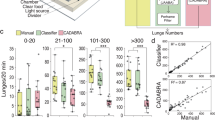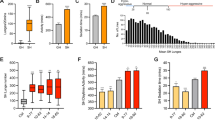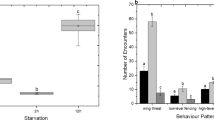Abstract
Aggressive behavior is a complex social behavior that is difficult to measure. Here, we describe a simple method for the quantitative analysis of aggression in male Drosophila melanogaster. Traditional measurements of aggressive behavior have relied on a territorial context with a food territory and a female as factors that induce or enhance aggression. The protocol described here is devoid of a food territory or a female, making it simpler than most existing methods used to measure aggressive behavior. Multiple pairs of males are tested simultaneously to obtain an average fighting score. Four parameters are used to quantify the behavior: frequency, index, latency and intensity of fighting based on unambiguous offensive fighting behaviors. The assay takes 15 min, during which time a frequency score is obtained for 20–35 pairs simultaneously. More in-depth analysis, including latency, index and intensity, can be performed on the videotaped record of the experiment. The assay is highly reproducible and requires limited resources in a simple setup.
This is a preview of subscription content, access via your institution
Access options
Subscribe to this journal
Receive 12 print issues and online access
$259.00 per year
only $21.58 per issue
Buy this article
- Purchase on Springer Link
- Instant access to full article PDF
Prices may be subject to local taxes which are calculated during checkout




Similar content being viewed by others
References
Popova, N. From genes to aggressive behavior: the role of the serotonergic system. Bioessays 28, 495–503 (2006).
Kravitz, E.A. & Huber, R. Aggression in invertebrates. Curr. Opin. Neurobiol. 13, 736–743 (2003).
Jacobs, M.E. Influence of light on mating of Drosphila melanogaster. Ecology 41, 182–188 (1960).
Benton, R. On the ORigin of smell: odorant receptors in insects. Cell Mol. Life Sci. 63, 1579–1585 (2006).
Greenspan, R.J. & Dierick, H.A. 'Am not I a fly like thee?' From genes in fruit flies to behavior in humans. Hum. Mol. Genet. 13, R267–R273 (2004).
Dow, M.A. & von Schilcher, F. Aggression and mating success in Drosophila melanogaster. Nature 254, 511–512 (1975).
Hoffmann, A.A. A laboratory study of male territoriality in the sibling species Drosophila melanogaster and D. simulans. Anim. Behav. 35, 807–818 (1987).
Baier, A., Wittek, B. & Brembs, B. Drosophila as a new model organism for the neurobiology of aggression? J. Exp. Biol. 205, 1233–1240 (2002).
Dierick, H.A. & Greenspan, R.J. Molecular analysis of flies selected for aggressive behavior. Nat. Genet. 38, 1023–1031 (2006).
Chen, S., Lee, A.Y., Bowens, N.M., Huber, R. & Kravitz, E.A. Fighting fruit flies: a model system for the study of aggression. Proc. Natl. Acad. Sci. USA 99, 5664–5668 (2002).
Edwards, A.C., Rollmann, S.M., Morgan, T.J. & Mackay, T.F. Quantitative genomics of aggressive behavior in Drosophila melanogaster. PLoS Genet. 2, e154 (2006).
Lee, G. & Hall, J.C. A newly uncovered phenotype associated with the fruitless gene of Drosophila melanogaster: aggression-like head interactions between mutant males. Behav. Genet. 30, 263–275 (2000).
Svetec, N. & Ferveur, J.-F. Social experience and pheromonal perception can change male–male interactions in Drosophila melanogaster. J. Exp. Biol. 208, 891–898 (2005).
Hall, J.C. Control of male reproductive behavior by the central nervous system of Drosophila: dissection of a courtship pathway by genetic mosaics. Genetics 92, 437–457 (1979).
Dierick, H.A. & Greenspan, R.J. Serotonin and neuropeptide F have opposite modulatory effects on fly aggression. Nat. Genet. 39, 678–682 (2007).
Barron, A.B. Anaesthetising Drosophila for behavioural studies. J. Insect Physiol. 46, 439–442 (2000).
Hoffmann, A.A. The influence of age and experience with conspecifics on territorial behavior in Drosophila melanogaster. J. Insect Behav. 3, 1–12 (1990).
Siegel, S. & Castellan, N.J. Choosing an appropriate statistical test. in Nonparametric Statistics for the Behavioral Sciences 2nd edn. (ed. Anker, J.D.) 3.19–3.36 (McGraw-Hill Inc., Boston, 1988).
Hoffmann, A.A. Territorial encounters between Drosophila males of different sizes. Anim. Behav. 35, 1899–1901 (1987).
Acknowledgements
I thank Ralph Greenspan for critically reading the manuscript and for useful comments and David Edelman for taking photographs. This work was supported by the National Science Foundation under Grant No. 0432063 (R.J. Greenspan and H.A.D.) and by the Neurosciences Research Foundation.
Author information
Authors and Affiliations
Corresponding author
Supplementary information
Supplementary Video 1
Repeated orientation of the attacking male prior to the first attack. (MOV 391 kb)
Rights and permissions
About this article
Cite this article
Dierick, H. A method for quantifying aggression in male Drosophila melanogaster. Nat Protoc 2, 2712–2718 (2007). https://doi.org/10.1038/nprot.2007.404
Published:
Issue Date:
DOI: https://doi.org/10.1038/nprot.2007.404
This article is cited by
-
The Divider Assay is a high-throughput pipeline for aggression analysis in Drosophila
Communications Biology (2021)
-
Social attraction in Drosophila is regulated by the mushroom body and serotonergic system
Nature Communications (2020)
-
Aggressive Behaviour of Drosophila suzukii in Relation to Environmental and Social Factors
Scientific Reports (2020)
-
Fighting experience affects fruit fly behavior in a mating context
The Science of Nature (2016)
-
Within-group male relatedness reduces harm to females in Drosophila
Nature (2014)
Comments
By submitting a comment you agree to abide by our Terms and Community Guidelines. If you find something abusive or that does not comply with our terms or guidelines please flag it as inappropriate.



